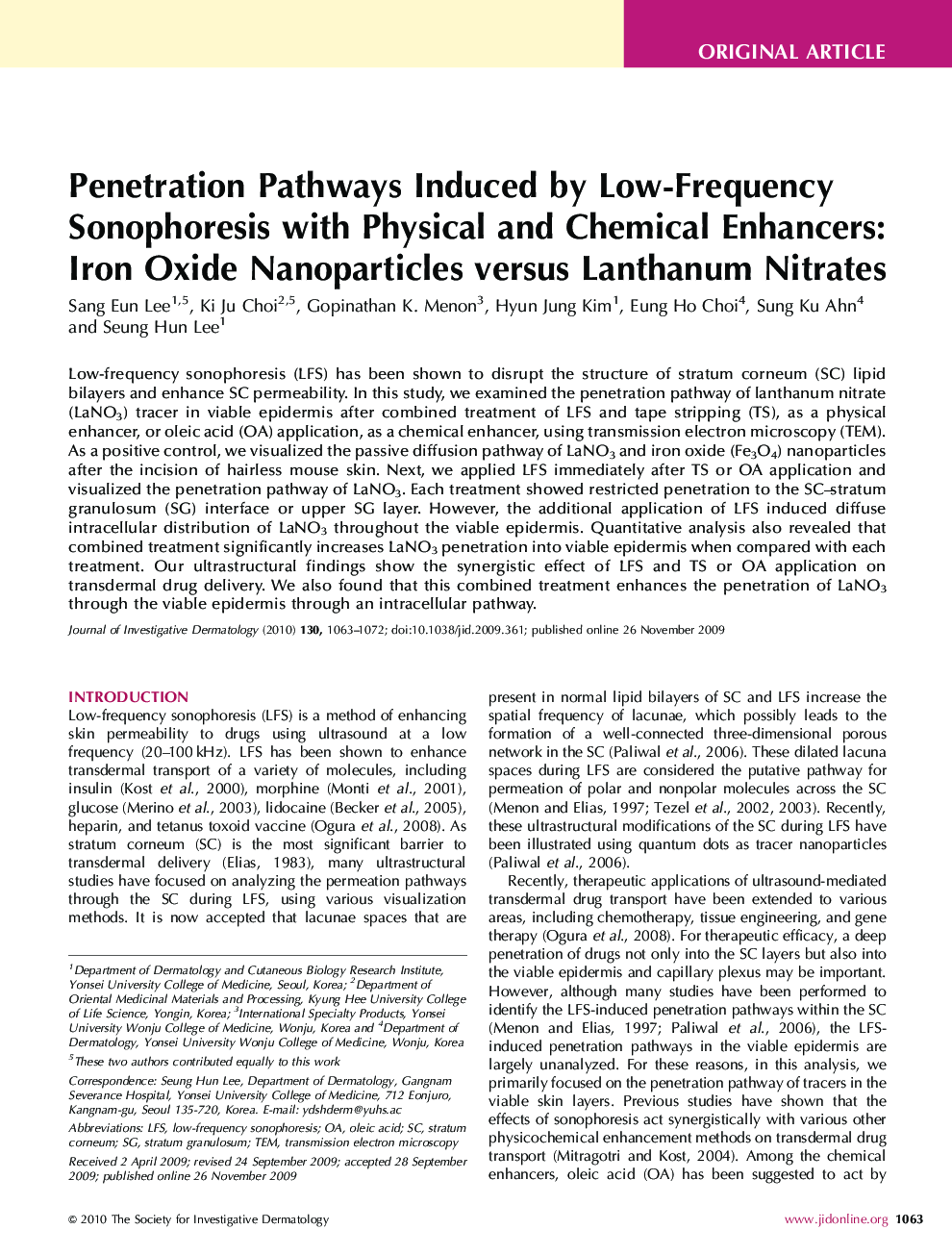| Article ID | Journal | Published Year | Pages | File Type |
|---|---|---|---|---|
| 3216091 | Journal of Investigative Dermatology | 2010 | 10 Pages |
Low-frequency sonophoresis (LFS) has been shown to disrupt the structure of stratum corneum (SC) lipid bilayers and enhance SC permeability. In this study, we examined the penetration pathway of lanthanum nitrate (LaNO3) tracer in viable epidermis after combined treatment of LFS and tape stripping (TS), as a physical enhancer, or oleic acid (OA) application, as a chemical enhancer, using transmission electron microscopy (TEM). As a positive control, we visualized the passive diffusion pathway of LaNO3 and iron oxide (Fe3O4) nanoparticles after the incision of hairless mouse skin. Next, we applied LFS immediately after TS or OA application and visualized the penetration pathway of LaNO3. Each treatment showed restricted penetration to the SC–stratum granulosum (SG) interface or upper SG layer. However, the additional application of LFS induced diffuse intracellular distribution of LaNO3 throughout the viable epidermis. Quantitative analysis also revealed that combined treatment significantly increases LaNO3 penetration into viable epidermis when compared with each treatment. Our ultrastructural findings show the synergistic effect of LFS and TS or OA application on transdermal drug delivery. We also found that this combined treatment enhances the penetration of LaNO3 through the viable epidermis through an intracellular pathway.
